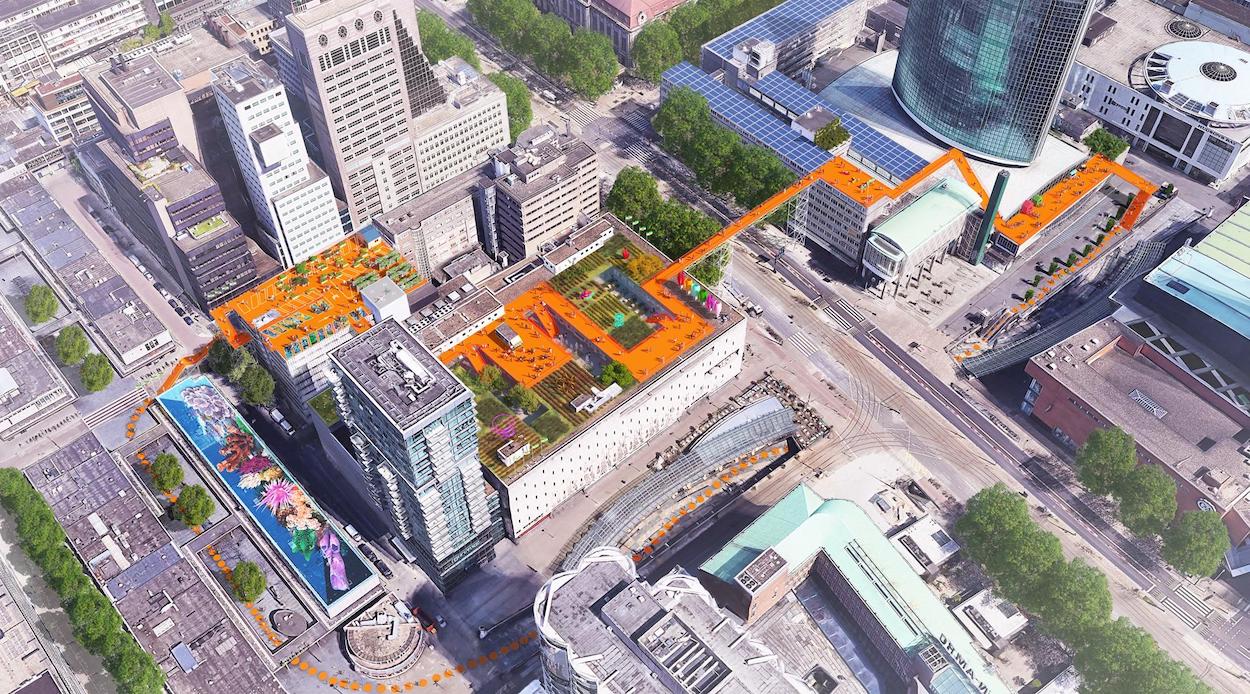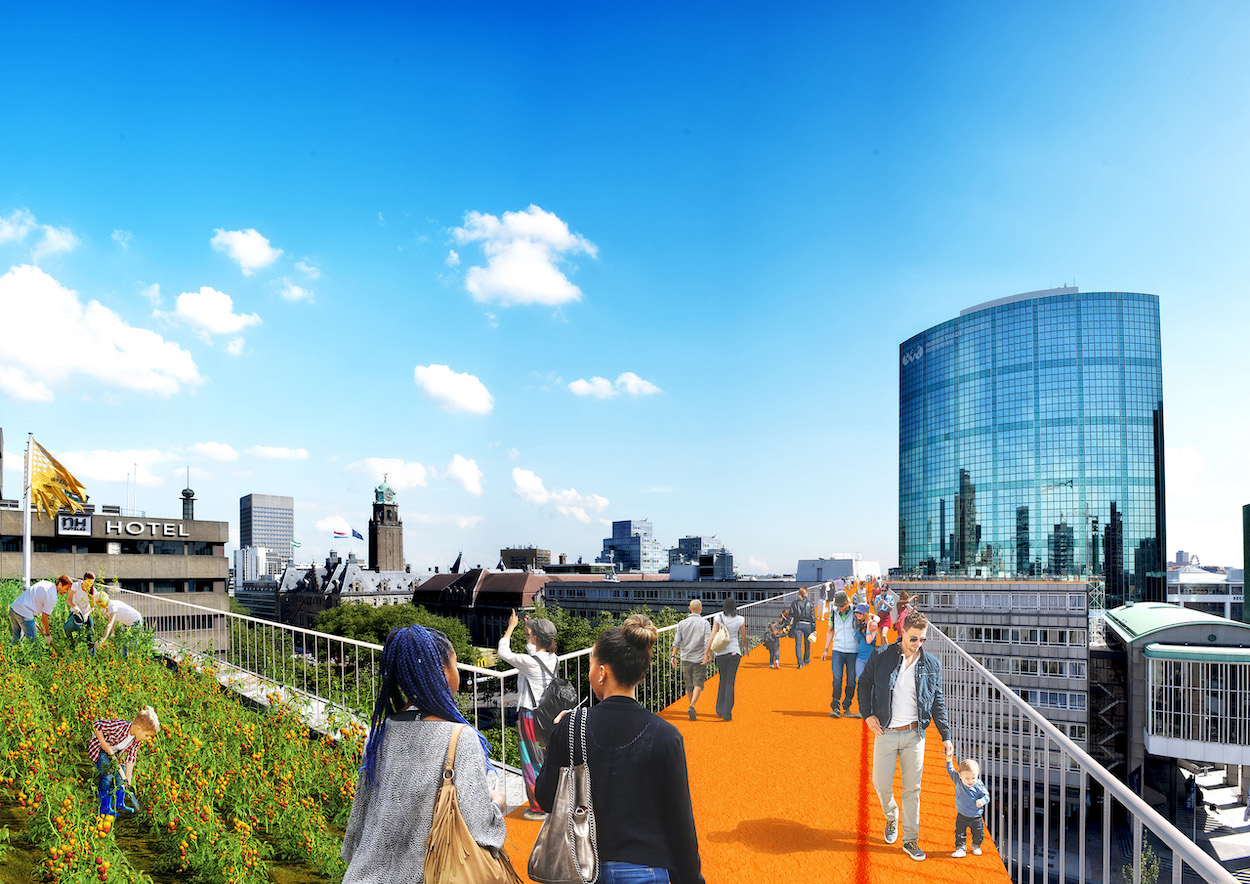During World War II, much of Rotterdam’s city center was razed due to a bombing by the German army. The opportunity for new construction gave architects and urban planners a blank slate to reinvent the neighborhood, whose crowded and impoverished quarters soon gave way to tree-lined avenues and modern high-rises with more than 150 million square feet of flat-topped rooftops. In 2008, the government started offering subsidies if building owners retrofitted their properties with green roofs—an incentive that soon gave way to experiments in stormwater management and harnessing solar power.
Now, the city is showing its imagination again by converting roofs into interconnected elevated parks. To access the skyward trail, visitors ascend a neon pink stairway to the top of the Het Nieuwe Instituut Museum, where tours, concerts, and exhibitions are held on a network of orange walkways snaking over such landmarks as the Bijenkorf department store and the World Trade Centre plinth, providing views of the bustling Coolsingel corridor below. Called Rotterdam Rooftop Days and designed by Dutch firm MVRDV, the path is an inventive example of adaptive reuse to address environmental issues like heat stress and flooding while providing a valuable outdoor community hub. (Rotterdam is home to more than 650,000 people, and public space is increasingly scarce.).
Rotterdam Rooftop Days is open until June 24 but for locals, the conversation is ongoing. More than 90 percent of the Dutch city lies below sea level, so urban planners are already devising clever solutions for water management like sponge parks and sunken squares. While these interventions have proven effective at diverting stormwater, the city’s footprint offers little room for further expansion. Rooftops, according to local Department of Sustainability worker Paul van Roosmalen, hold the key. “If you can do this on a lot of rooftops, you have a lot of small-scale solutions and that would add up to this one big-scale solution,” he tells Fast Company. That solution may entail green spaces like outdoor fitness machines and cemeteries that venture beyond traditional parks.


